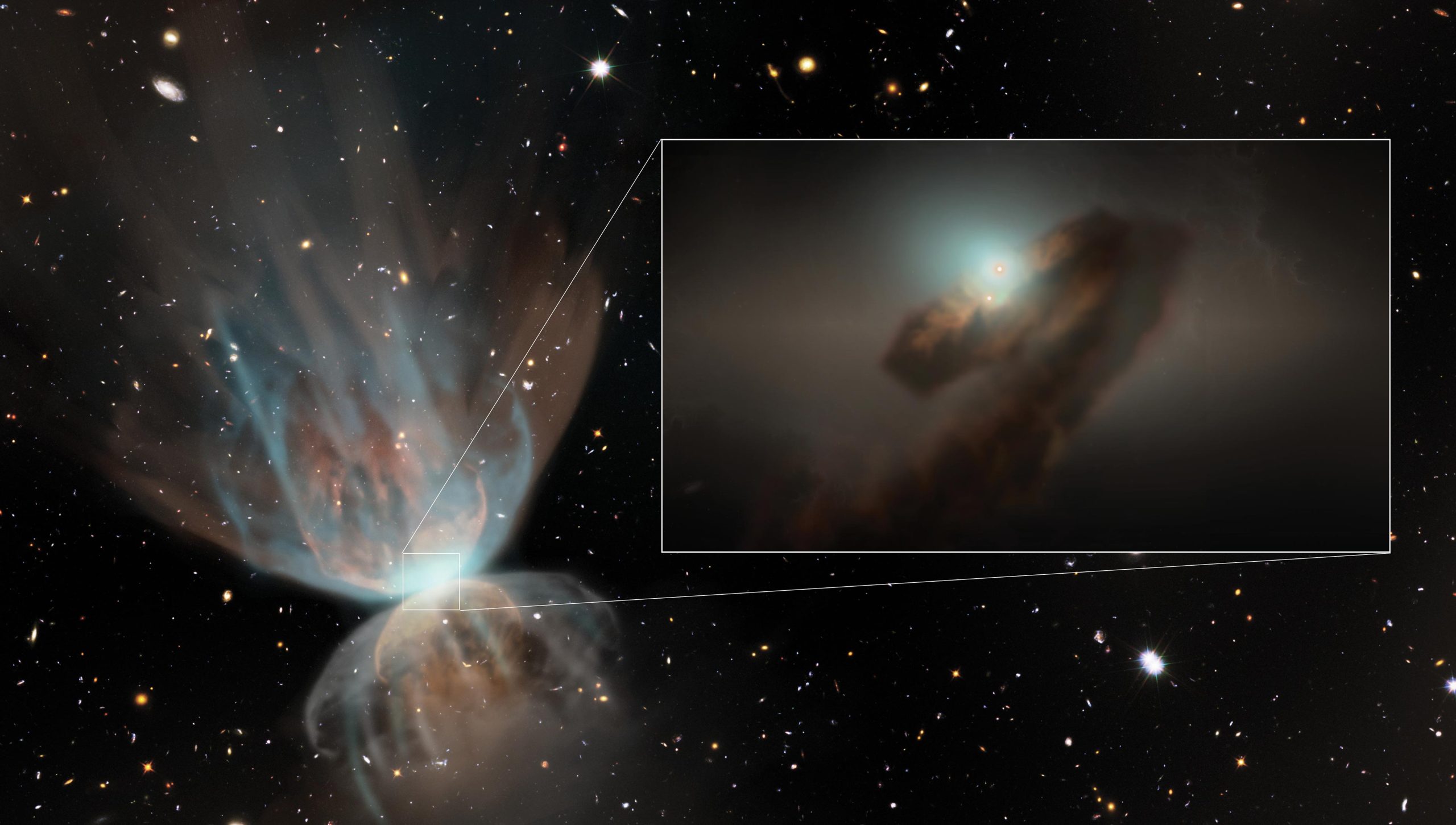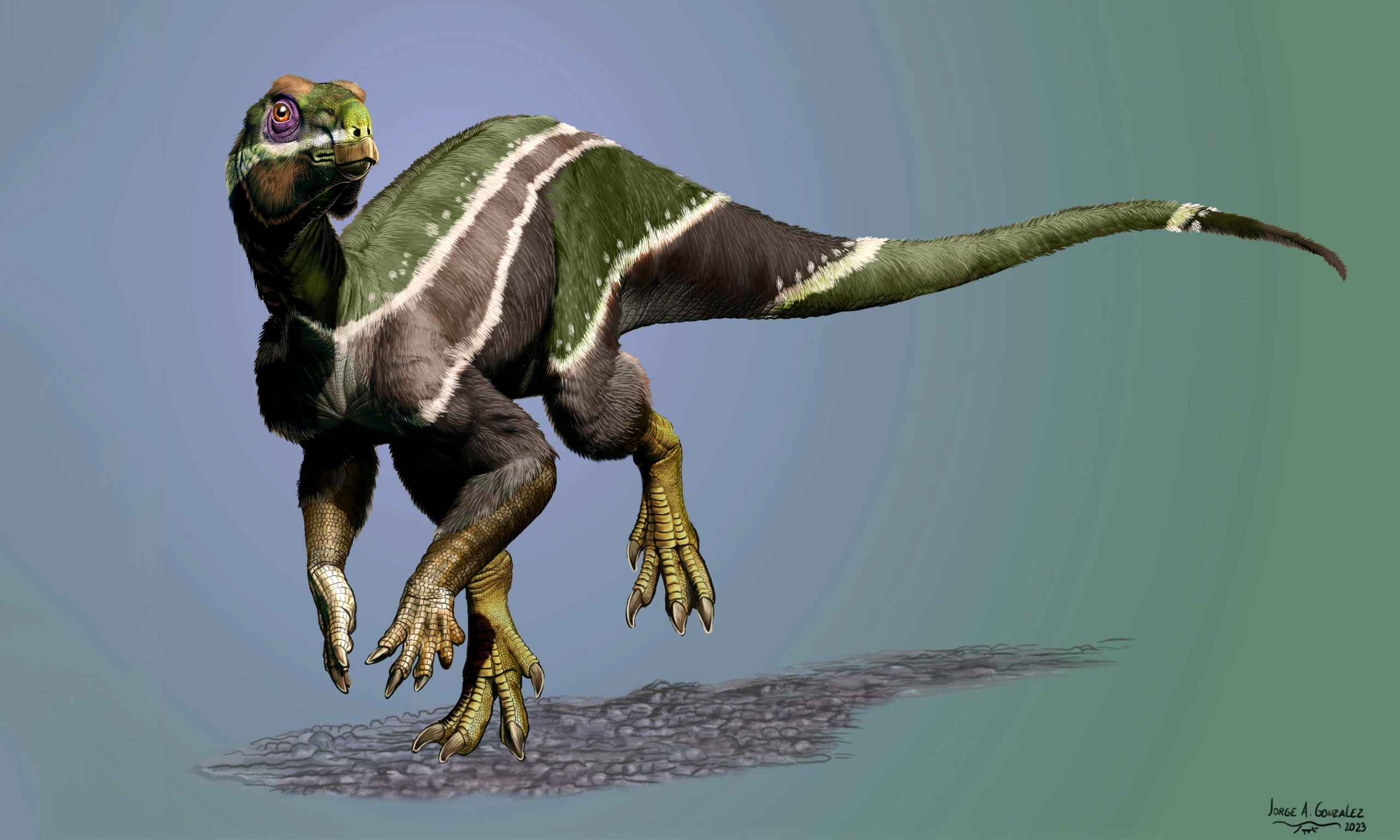Künstlerische Rekonstruktion Ianni Smithy. Dieser kürzlich entdeckte frühe Ornithopod-Dinosaurier könnte den letzten Bestand der Art während der Zeit der globalen Erwärmung in der Mitte der Kreidezeit vor etwa 99 Millionen Jahren darstellen, die zu drastischen Veränderungen in den Dinosaurierpopulationen führte. Bildnachweis: Jorge Gonzalez
neu entdeckter Dinosaurier, Ianni SmithyEr lebte während der klimatischen Umwälzungen der Mitte[{“ attribute=““>Cretaceous era and might be the last of its lineage, replaced by duckbill dinosaurs. This dinosaur, found in Utah, represents a critical transitional period in dinosaur history, affected by rising CO2 levels, global warming, and shifting dinosaur populations.
A newly discovered plant-eating dinosaur may have been a species’ “last gasp” during a period when Earth’s warming climate forced massive changes to global dinosaur populations.
The specimen, named Iani smithi after Janus, the two-faced Roman god of change, was an early ornithopod, a group of dinosaurs that ultimately gave rise to the more commonly known duckbill dinosaurs such as Parasaurolophus and Edmontosaurus. Researchers recovered most of the juvenile dinosaur’s skeleton – including skull, vertebrae and limbs – from Utah’s Cedar Mountain Formation.
Iani smithi lived in what is now Utah during the mid-Cretaceous, approximately 99 million years ago. The dinosaur’s most striking feature is its powerful jaw, with teeth designed for chewing through tough plant material.
Die Mitte der Kreidezeit war eine Zeit großer Veränderungen, die große Auswirkungen auf die Dinosaurierpopulationen hatten. Der in dieser Zeit erhöhte Kohlendioxidgehalt in der Atmosphäre führte zu einem Anstieg der Erdtemperatur und einem Anstieg des Meeresspiegels, was dazu führte, dass die Dinosaurier immer kleinere Landgebiete besiedelten. Es war so warm, dass an den Polen Regenwälder wuchsen. Blühende Pflanzen eroberten die Küstengebiete und ersetzten natürliche Nahrungsquellen für Pflanzenfresser.
In Nordamerika verschwanden die riesigen pflanzenfressenden Sauropoden – einst Titanen der Landschaft – zusammen mit ihren Allosaurus-Raubtieren. Zur gleichen Zeit kamen auch kleinere Pflanzenfresser wie alte Entenschnabel- und Hornsaurier sowie gefiederte Theropoden wie Tyrannosaurier und riesige Oviraptorosaurier aus Asien.
Tritt ein Ianni Smithyist nicht nur deshalb einzigartig, weil es neu entdeckt wurde, sondern auch wegen seiner Seltenheit im nordamerikanischen Fossilienbestand und seinem Platz in der Geschichte der Dinosaurier.
„gefunden Mich Es war eine Glückssträhne. Wir wussten, dass so etwas in diesem Ökosystem lebte, weil hier und da vereinzelte Zähne gesammelt wurden, aber wir hatten nicht erwartet, auf ein so schönes Skelett zu stoßen, insbesondere aus dieser Zeit in der Erdgeschichte. Für die Rekonstruktion der Geschichte war es von unschätzbarem Wert, einen nahezu vollständigen Schädel zu haben“, sagt Lindsey Zano, außerordentliche Forschungsprofessorin bei[{“ attribute=““>North Carolina State University, head of paleontology at the North Carolina Museum of Natural Sciences, and corresponding author of the work.

The lower jaw and teeth of new dinosaur Iani smithi. Credit: National Geographic, Mark Thiessen and Becky Hale
Zanno and her team used the well-preserved skeleton to analyze the evolutionary relationships of Iani and were surprised – and a bit skeptical – of the results.
“We recovered Iani as an early rhabdodontomorph, a lineage of ornithopods known almost exclusively from Europe,” Zanno says. “Recently, paleontologists proposed that another North American dinosaur, Tenontosaurus – which was as common as cattle in the Early Cretaceous – belongs to this group, as well as some Australian critters. If Iani holds up as a rhabdodontomorph, it raises a lot of cool questions.”
Key among these is, could Iani be a last gasp, a witness to the end of a once successful lineage? Zanno thinks that studying this fossil in the context of environmental and biodiversity changes during the mid-Cretaceous will give us more insight into the history of our planet.
Iani smithi is named for Janus, the two-faced god who symbolized transitions – an apt name, given its position in history.
“Iani may be the last surviving member of a lineage of dinosaurs that once thrived here in North America but were eventually supplanted by duckbill dinosaurs,” Zanno says. “Iani was alive during this transition – so this dinosaur really does symbolize a changing planet.
“This dinosaur stood on the precipice,” she says, “able to look back at the way North American ecosystems were in the past, but close enough to see the future coming like a bullet train. I think we can all relate to that.”
Reference: “An early-diverging iguanodontian (Dinosauria: Rhabdodontomorpha) from the Late Cretaceous of North America” by Lindsay E. Zanno, Terry A. Gates, Haviv M. Avrahami, Ryan T. Tucker and Peter J. Makovicky, 7 June 2023, PLOS ONE.
DOI: 10.1371/journal.pone.0286042
The work appears in PLOS ONE and was supported by the National Science Foundation. Zanno is lead author as well as corresponding. Terry Gates and Haviv Avrahami, both of NC State and the North Carolina Museum of Natural Sciences, along with Ryan Tucker of Stellenbosch University and Peter Makovicky of the University of Minnesota, also contributed to the work.

„Pop-Kulturaholic. Web-Nerd. Engagierter Social-Media-Praktiker. Reisefanatiker. Schöpfer. Food-Guru.“







More Stories
Astronomen lösen das Geheimnis der dramatischen Explosion von FU Orionis im Jahr 1936
Astronauten auf dem Mond können sich fit halten, indem sie auf dem Rad des Todes laufen
Vergleich der kommerziellen Besatzungen der NASA: Boeing Starliner und SpaceX Dragon